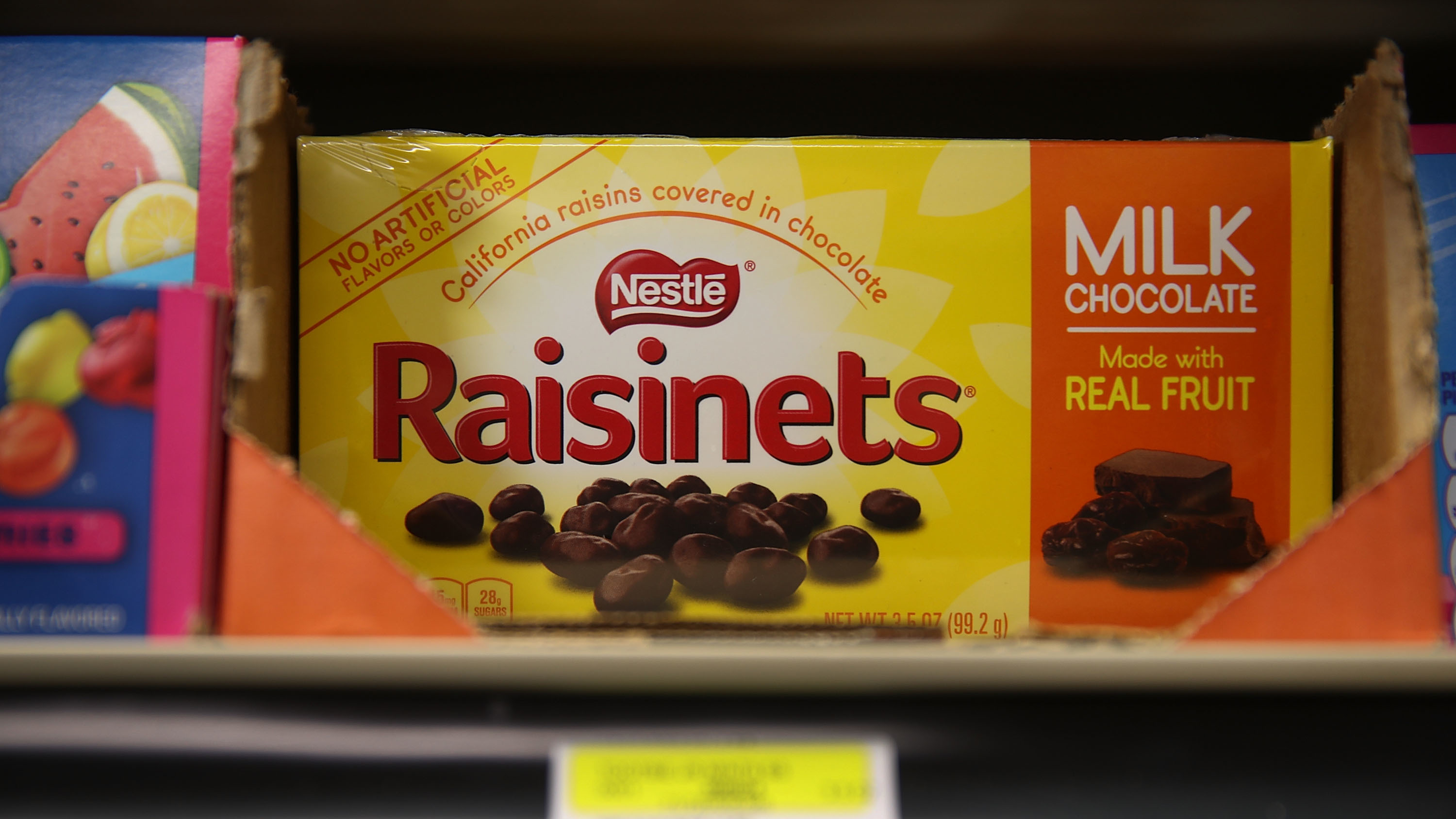Empty Boxes, Empty Promises: Lawsuits Claim Candy Containers Are Underfilled
We try to push the Raisinets as a movie snack on the children, as it at least has some nutritional value underneath all that chocolate. After we plunk down our hard-earned $3.50 or so per box, we often hear the complaint that the box isn't even filled all the way. Frankly, we just thought this was just whiny people being whiny, but now, it looks like they may be on to something.
According to the Lexis news service Law 360, this week a Missouri federal judge denied Nestle Inc.'s motion to dismiss a class action over Raisinets boxes that "allegedly contain almost as much air as candy." Plaintiff Lahonee Hawkins bought a Raisinets pack at a Rolla, Missouri, Walgreens that she said was underfilled.
Nestle tried and failed to pull out the "maraca argument" saying that a consumer "upon picking up the Raisonets [sic] container, would instantly realize that it is not filled to the brim: with each movement of the package, its contents noticeably and audibly [emit a] 'maraca-like rattle.'"
The federal judge, who we're kind of loving, immediately shot that down: "Whether a reasonable consumer would notice rattling in the 13-second course of making the purchasing decision and what a consumer would make of it, let alone instantly conclude the [boxes] are as much as 45 percent slack-filled, are questions of fact." He added that "the maraca argument was irrelevant because it was not made or mentioned in the complaint."
Turns out Nestle isn't even the only candy company in this particular hot seat this week. Another class action suit has been filed against the makers of Werther's caramels. Plaintiff Jeffrey Kpakpoe-Awei "alleged Storck USA LP fills the 2.75-ounce bags of caramels with unnecessary empty space that misrepresents the amount of chews that are actually in the container." He claims to have purchased a bag of the sugar-free caramels in December that was less than 40 percent full. The maraca defense won't work here either, as "The U.S. Food and Drug Administration has previously determined that consumers shouldn't be expected to shake or otherwise manipulate the packaging of a product to determine its contents, the complaint said." We swear we didn't even know that was a thing; we hardly ever shake our food before buying it.
Sadly, in this age of shrinking packaging and rising prices, we're hardly surprised that some candy manufacturers may be trying to get us to pay more for actual air, but we will definitely be interested in seeing how these lawsuits turn out. An official product-to-air ratio limit seems like a necessary guideline.
